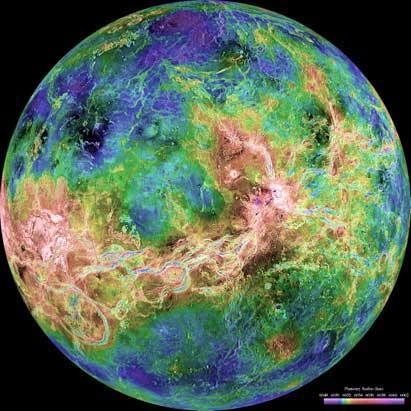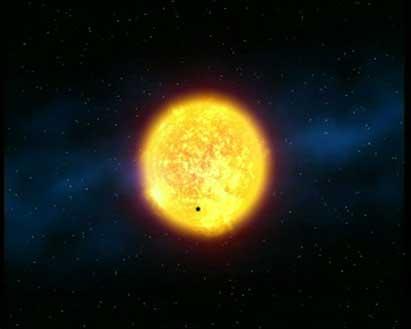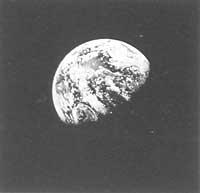How curious is Venus!
2001/06/14 Elhuyar Zientzia

Venus is named after the Roman goddess of love and beauty, known since ancient times. It is the brightest body we can see in the sky, eliminating the Sun and the Moon. On the planet it is romantic and curious.
It takes longer to turn on itself than to make a complete orbit around the Sun: 243.09 days versus 224.7 days. Moreover, it revolves around itself in the opposite direction of all other planets. From above, instead of turning in the opposite direction to the clock needle (like the Earth), turn in the same direction. The reasons for the "retrograde rotation" of Venus are diffuse. It is attributed to an extraordinary and random ancient event. However, as published today in the journal Nature, that event was not so random. The research was conducted by Alexandre Correla and Jacques Laskar of Astronomy and Dynamic Systems in Paris.
The inner planets of the Solar System (Mercury, Venus, Mars and Earth) have the rotation axes inclined. In earlier research, two yellow researchers demonstrated that small changes could cause random fluctuations in the axes and that the rotation of the planets was very sensitive to small changes. From this knowledge, they developed the theory of retrograde rotation of Venus. Correla and Laskar considered that the tides affected by the strong atmosphere of Venus could have changed the sense of the rotation of the planet, but for this it was necessary that the axis of the planet was very inclined.
Research has continued and other conclusions have been made known today. Simulations have been made with data from the internal movements of the tides and Venus. Modifying the initial conditions, we analyze what happened with the rotation and we observe that in most cases the retrograde rotation is more stable than the other. According to researchers, the retrograde rotation of Venus is more than random.

Gai honi buruzko eduki gehiago
Elhuyarrek garatutako teknologia






